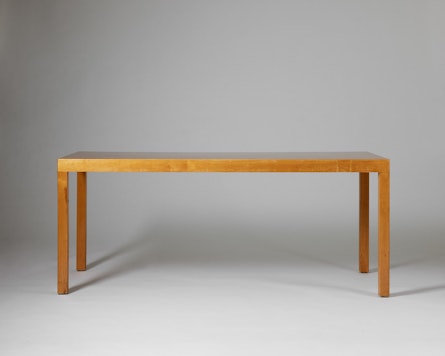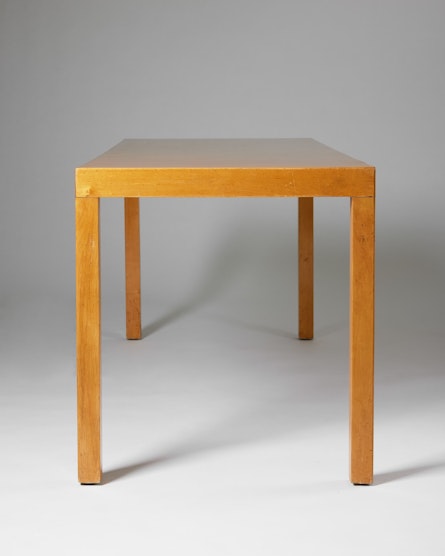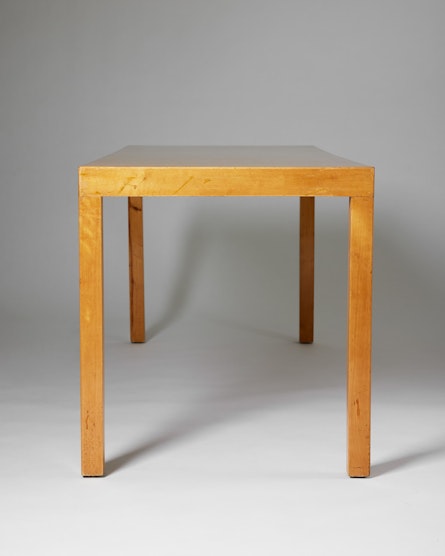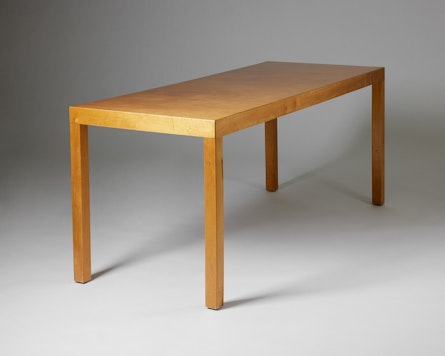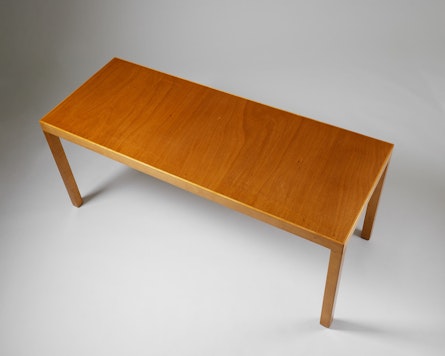Reference number: 7690
Tear sheet: Download
Material:
Elm.
Measurements:
H: 75 cm / 2' 5 1/2"
L: 180 cm / 5' 11''
W: 70 cm / 2' 3 1/2''
L: 180 cm / 5' 11''
W: 70 cm / 2' 3 1/2''
Description:
Uno Åhrén (1897-1977) was a prominent Swedish architect and urban planner, playing a ket role in the development of functionalism in Sweden during the early 20th century. As a central figure in the Swedish modernist movement, Åhrén’s work was rooted in the belief that design should prioritise functionality, simplicity, and the needs of modern living.
Åhrén collaborated with Svenskt Tenn in the late 1920s and early 1930s, contributing to the evolution of modern Swedish design. Together with Estrid Ericson, he helped define the principles of Swedish modernism—merging functionality with refined aesthetics—and laid the foundation for Svenskt Tenn’s enduring influence in interior design.
His collaboration with Svenskt Tenn was prominently featured at the Stockholm Exhibition of 1930, a pivotal event for Swedish functionalism. Here, Åhrén’s ideas about modern living environments gained widespread recognition, showcasing how design could improve everyday life through thoughtful, rational solutions.
Åhrén’s commitment to functionalism is evident in his furniture designs for Svenskt Tenn, characterised by clean lines, geometric clarity, and a restrained aesthetic. This table reflects these principles, highlighting his focus on simplicity, material integrity, and the seamless integration of form and function.
Early maker's mark underneath the surface.

